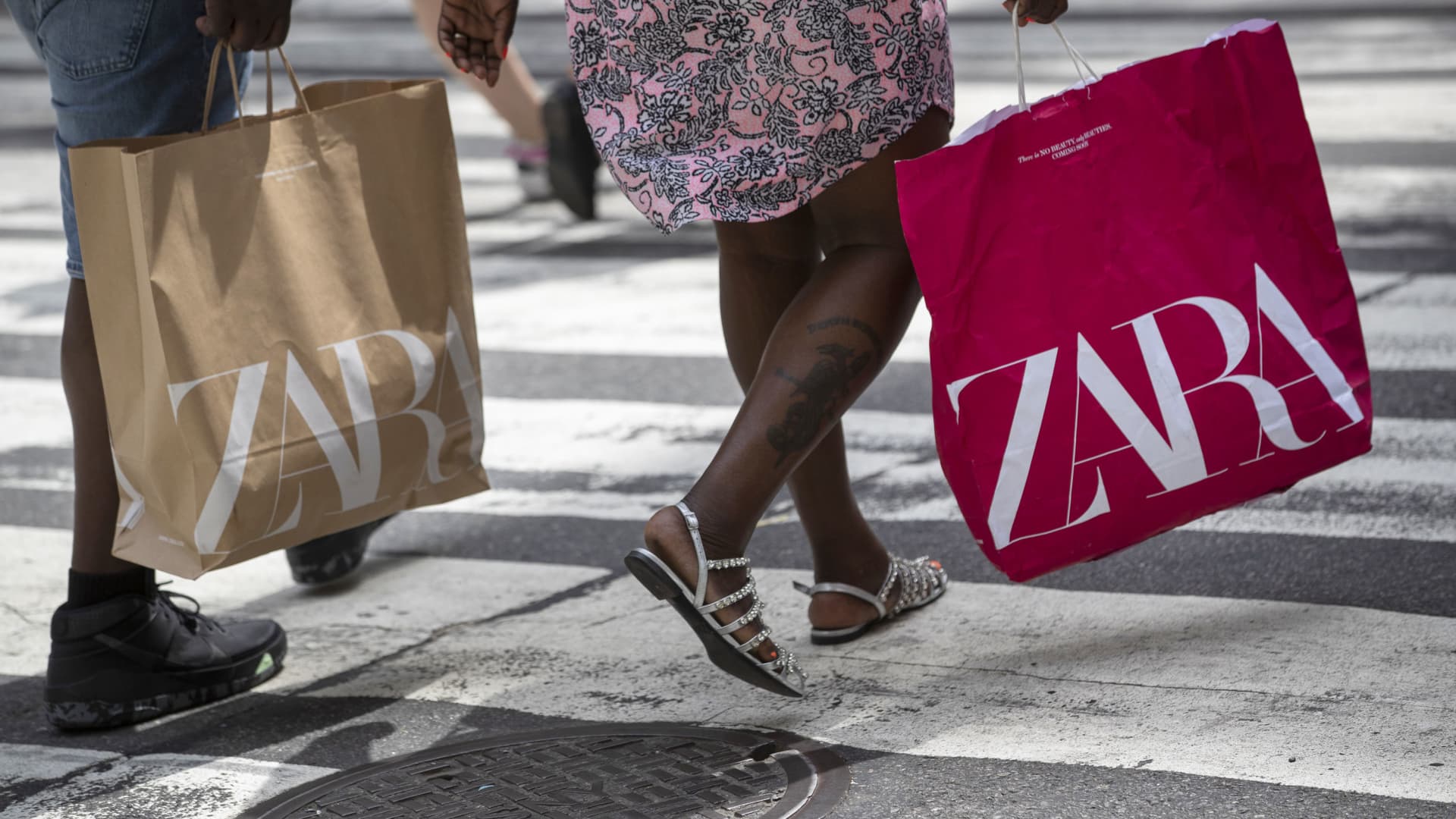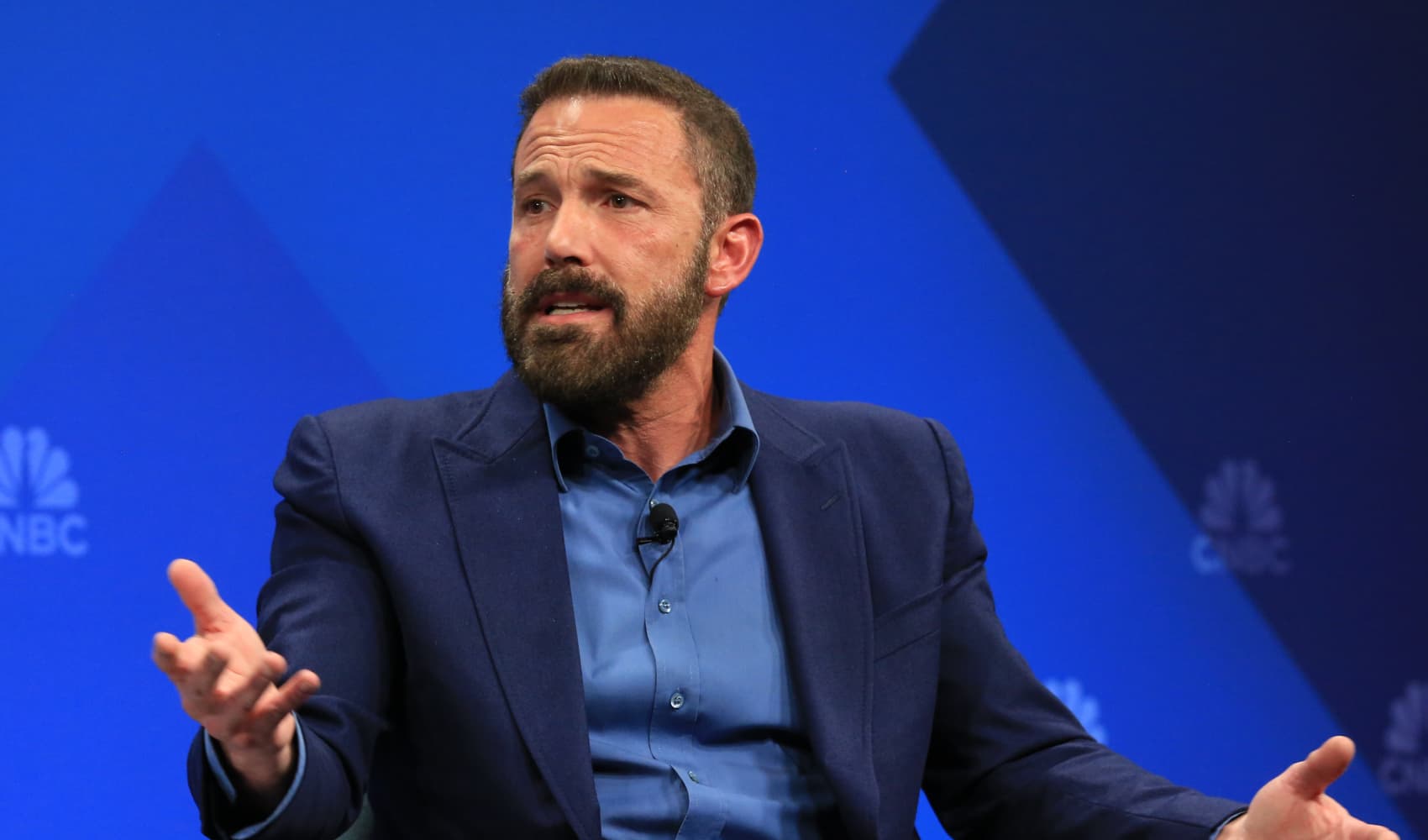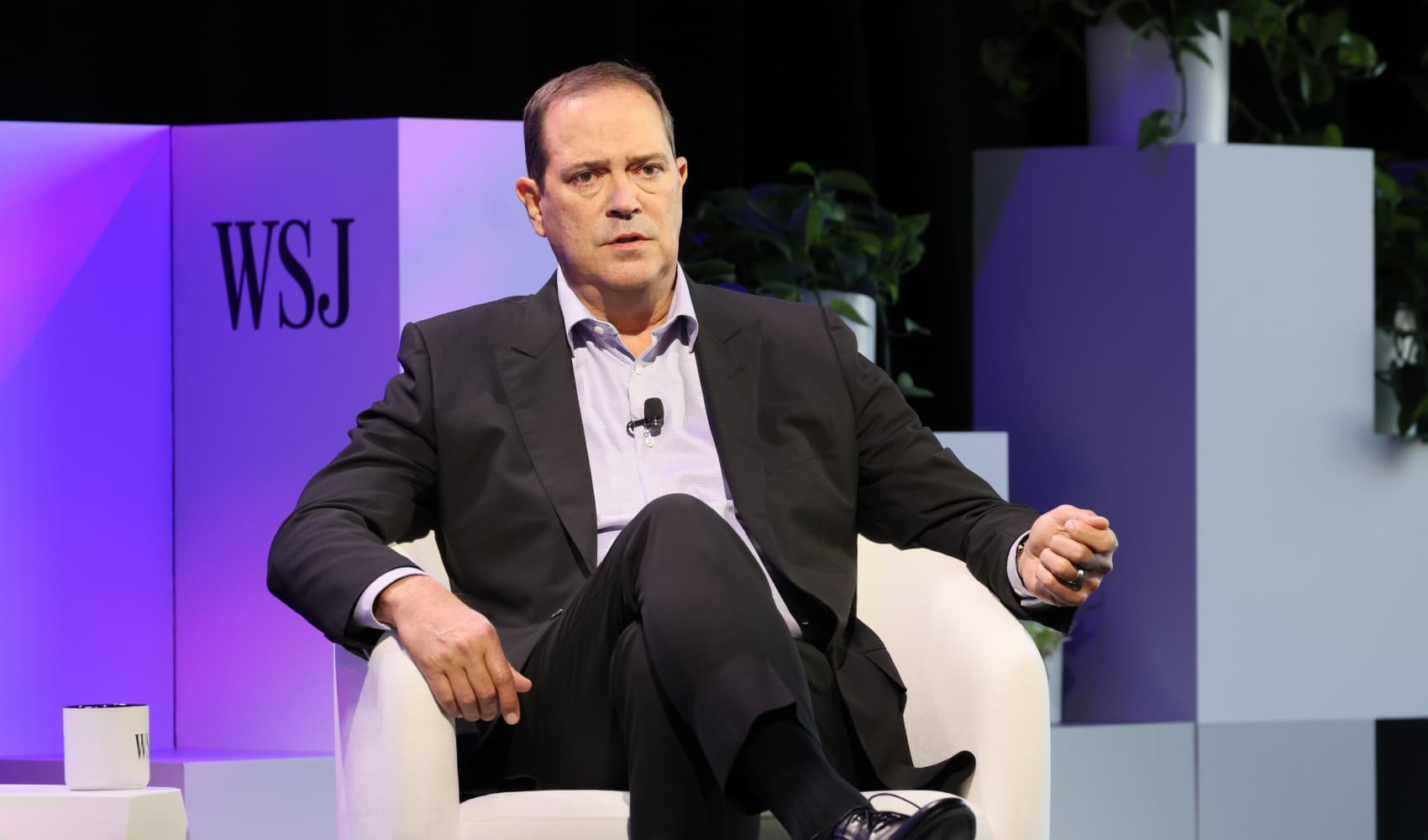
- Almost all clothing eventually ends up in a landfill, not only giving the fashion industry a difficult waste problem but also a carbon footprint issue.
- Recycling efforts so far have not made much of a dent, due to the fact that most garments are made with a blend of textiles hard to recycle.
- But that challenge has created a new industry for recycling-focused startups, attracting interest from companies like Levi's, Adidas and Zara.
The fashion industry has a very well-known waste problem.
Almost all (roughly 97%) of clothing eventually ends up in a landfill, according to McKinsey, and it doesn't take very long for the lifecycle of the latest apparel to reach its end: 60% of clothing manufactured hits a landfill within 12 months of its manufacturing date.
In the last two decades, that concerning trend in clothing production has accelerated enormously with the rise of fast fashion, multinational production, and the introduction of cheaper plastic fibers.
The multi-trillion dollar fashion industry contributes significant greenhouse gas emissions, between 8% to 10% of total global emissions, according to the United Nations. That is more than all international flights and maritime shipping combined. And as other industries make progress on carbon reduction solutions, fashion's carbon footprint is forecast to grow — it is predicted to account for over 25% of the world's global carbon budget by 2050.
The apparel industry wants to be taken seriously when it comes to recycling, but even the simplest solutions haven't worked. According to sustainability experts, as much as 80% of Goodwill clothing ends up going to Africa because the U.S. secondhand market can't absorb the inventory. Even local drop-off bins send clothing to Africa due to the complexity of the domestic supply chain and overflow.
So far, refashioning old clothing into new clothing has barely made a dent in the industry. Currently, less than 1% of textiles produced for clothing are recycled into new clothing, which comes at a cost of a $100 billion a year in revenue opportunity, according to McKinsey Sustainability.
Money Report
One big problem is the blending of textiles now common to the manufacturing process. With the majority of textiles in the fashion industry blended, it is harder to recycle one fiber without harming another. A typical sweater can contain multiple different types of fibers including a blend of cotton, cashmere, acrylic, nylon and spandex. None of the fibers can be recycled in the same pipeline, as has been economically done in the metals industry.
"You would have to decouple five intimately blended fibers and send them to five different recycling scenarios in order to recover most sweaters," said Paul Dillinger, head of global product innovation at Levi Strauss & Co.
The clothing recycling challenge is fueling startups
The complexity of the fashion recycling problem is behind new business models that have emerged at companies including Evrnu, Renewcell, Spinnova, and SuperCircle, and some big new commercial operations.
Spinnova partnered with the world's largest pulp and paper company this year, Suzano, to turn wood and waste into recycled textile fiber.
"Increasing the textile-to-textile recycling rate is at the heart of the issue," said a Spinnova spokeswoman. "There is very little economic incentive to collect, sort, shred, and bale textile waste, which are the first steps in the recycling loop," she said.
Textile waste, by some measures, is a bigger issue than plastics waste, and it has a similar problem.
"It is a really low-cost product where the output doesn't have significantly high value and the cost to identify, sort, aggregate, and collect items is much higher than what you can get from the actual recycled output," according to Chloe Songer, CEO of SuperCircle, which offers consumers and brands the ability to have a variety of finished products mailed to its warehouses for sorting and recycling — and credit towards the purchase of items from the Thousand Fell recycled sneaker brand run by its CEO.
"Impact unfortunately costs money, and it's figuring out how to make that make business sense that's important," Songer said.

The circular economy of Zara, Adidas, Levi's
Levi Strauss is making progress in its attempt to fashion a circular economy with its iconic 501 blue jeans now made from 40% fiber from Renewcell, and 60% organic cotton. And it's not just what you see on the outside of the jeans, Dillinger said. The red tab, back patch, stitching, and interior labeling have all been rendered in cotton, which people don't think about when recycling a pair of jeans. In the case of the 501, since the final garment is mixed only with organic cotton, the recycled jeans and cotton become pure inputs, Dillinger said, back into the recycling systems that have the potential to close the loop.
But that is the exception to the rule today. He pointed to the promotional t-shirts that runners get for their 5K that are typically made of 50% cotton and 50% polyester, or a fleece sweater made for children that includes both cotton and polyester to comply with fire safety concerns, both which are pervasive products and add to the challenge of recycling mixed materials.
"You've got all of these structural, behavioral, and material challenges, and somehow we're not getting the message out that it is urgent," Dillinger said.
Adidas says it is on track to using only recycled polyester by the end of 2023 — currently at 96% — which is a year ahead of its original goal. The share of recycled polyester worldwide, meanwhile, is currently at 15%, according to an Adidas spokeswoman, who said changes up and down the supply chain are critical to these goals being met.
Dillinger said regulators and consumers are just as important as supply chain partners.
"Somehow, the civic engagement and collective understanding that it's not just doable, but necessary, hasn't permeated our collective social behavior," Dillinger said. "Are people going to meet us midway with their behavior and then are regulations and infrastructure going to meet us to take that behavior across the line? I don't know. That's the big unknown."
Regulatory trends are a factor that Stacy Flynn, CEO of Evrnu — which ranked No. 37 on the 2023 CNBC Disruptor 50 list — is watching closely.
Flynn developed a textile recycling platform, NuCycl, that can transform discarded clothing into new fiber, and it says equal or outperform 90% of fibers, including cotton, nylon, and polyester, on cost and quality using existing textile supply chain equipment.
Evrnu's first big break was a partnership with Levi's to create the company's classic 511 jeans in 2016, and it has also launched pilots with Stella McCartney and Adidas. Late last year it worked on a limited collection with fast fashion clothing giant — and consumer consumption flashpoint — Zara, using its recycled textile waste material.
Zara has a stated goal of using only 100% organic cotton, recycled, or sustainable material fabrics in all of its clothing and 100% recycled polyester and organic linen by 2025. But it isn't yet clear how feasible that timeline is for any of the major brands.
"While there are numerous technological solutions to making clothing more sustainable, the technology does not yet match the scale and demand of the global fashion industry," a Zara spokesperson said.
"In order to solve the system problem consumption needs to decrease, longevity of apparel needs to increase (reuse, repair), and product design needs to embrace sustainability (recyclable/designed for dis-assembly)" Flynn wrote in an email. "All of these run counter to the current fast fashion business model unless we can scale solutions."
Waste legislation may help improve textile economics
Flynn said new legislation coming on board will make producers responsible for waste disposal, and will help ease current pricing disparities between virgin and recycled fibers/fabrics over time. Heightened regulation in the EU has contributed to the acceleration of textile recycling business models. The EU's Waste Directive Framework requires countries to separate all textile waste by 2025, and the EU's Circular Economy Action Plan ensures that circular economy principles are applied to all textile manufacturing, products, consumption, and waste management.
In the United States, policy advocates have taken smaller strides towards recycled fashion, with some state bills introduced. In California, the SB 707 bill was introduced in February to create a statewide recycling program for textiles.
In New York State, The Fashion Sustainability and Social Accountability Act, also known as the Fashion Act, would hold companies accountable for their recycling practices. It is currently backed by fashion brands like Eileen Fisher, Stella McCartney, Everlane, and Patagonia, as well as other advocacy organizations pushing to pass the bill.
Tricia Carey, chief commercial officer at Renewcell — a Swedish textile recycling company, which opened the world's first commercial-scale textile-to-textile chemical recycling pulp mill — says she can see the differences between consumer behavior in the U.S. and Europe traveling between both frequently.
"Consumers also need to look at how they're disposing of garments and making sure that's being done responsibly. It's kind of going back to the times when garments are treasured and not just tossed," Carey said.
Renewcell's ambition is to recycle more than 1.4 billion t-shirts every year by 2030. Renewcell's technology has its own limitations, however, only able to recycle clothes that are made of cotton and up to 5% non-cotton material like polyester.
Textile recycling companies like Renewcell, Evrnu, Spinnova, and SuperCircle view co-branding with major consumer companies as a key element to ensuring consumers understand the value of what they're buying and bolstering brand loyalty.
"It's about making wise purchase decisions because your buying power is how you're making decisions. Look for brands that have strategies around sustainability ... I think being loyal to those brands is very important," Carey said.
But these new business models should not be expecting the biggest payoff to be measured in recycling business dollars, Songer said. "You can't look at recycling and think you're going to make a million bucks recycling cotton t-shirts, because you're not," she said. "You have to find another way to make it make economic sense, and these business models are going to be really interesting in the next few years."






